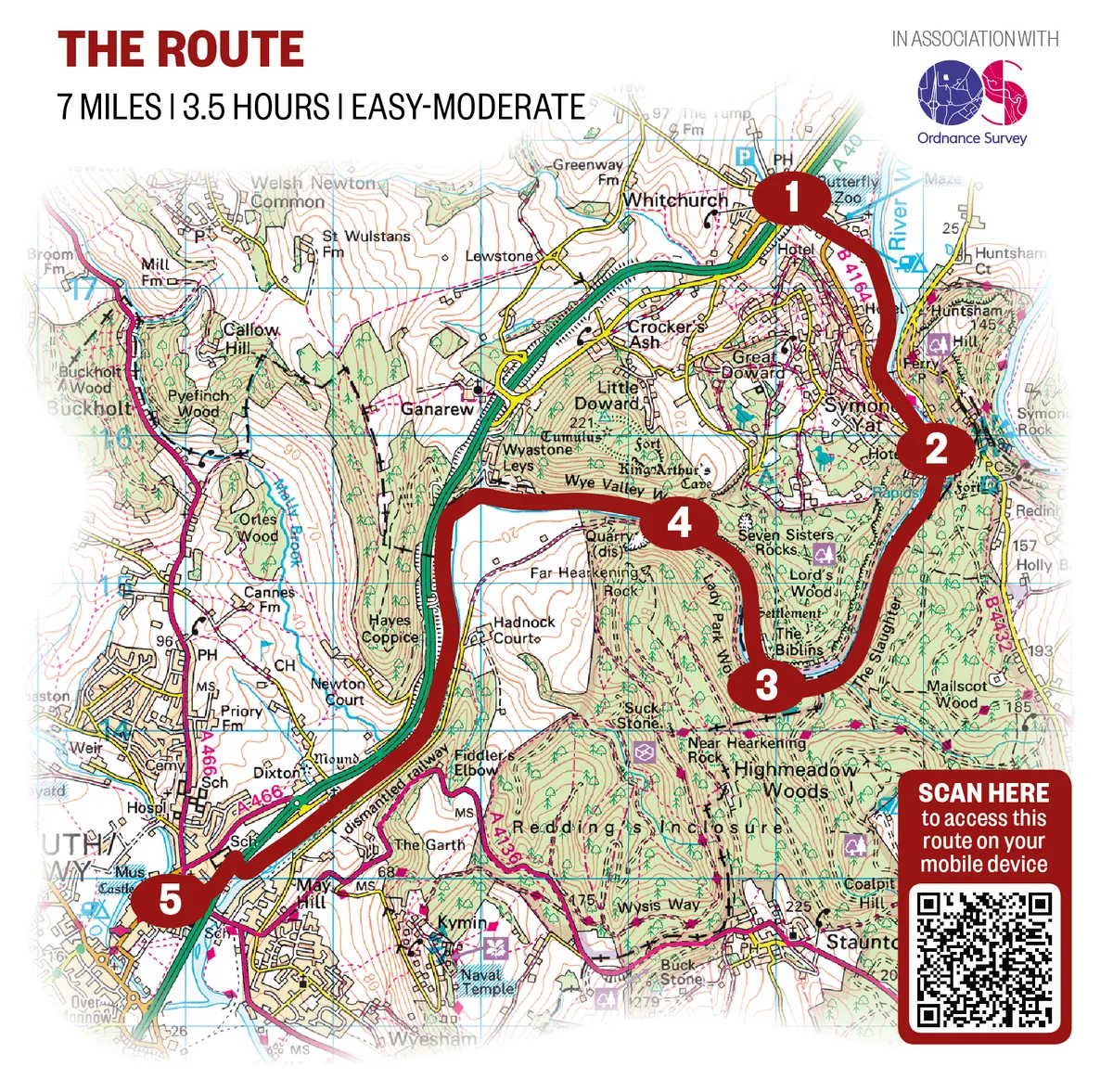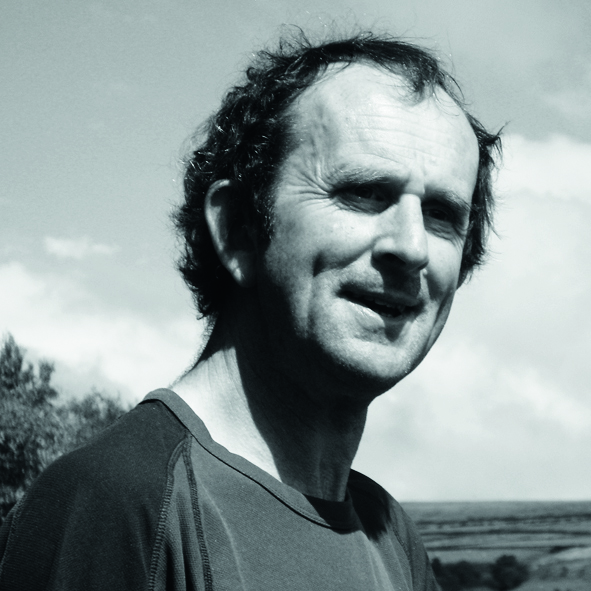South of its renowned horseshoe loop and Yat Rock, the Wye surges between looming shoulders of limestone into a magnificent wooded chasm.
The cottage-dotted slopes of Symonds Yat give way to yew, ash, beech and lime woods, cascading from fractured cliffs soaring more than 80m above the river, which is over 10m deep in places. Vast towers of dolomite glisten in the sunshine, contrasting with the verdant broadleaf forest. While above the gorge, reached by steep paths, are fabulous viewpoints and tantalising evidence of our distant forefathers.

This easy one-way walk down the gorge from Whitchurch to Monmouth includes two crossings of the river – by rope ferry and wire-mesh bridge – adding thrill to the ramble. There is ample opportunity for birdwatching, and you may also glimpse an otter or polecat, disturb foraging badgers, spot timid boar or encounter deer browsing downstream where the cliffs give way to meadows.
River Wye walk
7 miles/11.2km | 4 hours | moderate
1. Ye Old ferrie
From Whitchurch roundabout, head for Symonds Yat West. After 300m at the sharp-right bend, turn left on narrow Old Wharf Lane to reach St Dubricius’s church (parts date back nearly 800 years). The name of the lane recalls that the Wye was once a busy highway, with flat-bottomed boats – or trows – serving the wharf that traded goods to riverside towns and Bristol.

Join the adjacent waterside path and stroll downstream, passing caravan sites before reaching Ye Old Ferrie Inn. There may be a hand-operated ferry here (small fee), taking you to the far bank. If not, continue down Ferrie Lane behind the pub for 550m to reach another hand ferry that crosses to The Saracen’s Head Inn (ring 01600 890435 to check operation – it goes most days).
2. Railway and rapids
Head downstream on the far bank. Beyond The Saracen’s Head, take the lane past the Royal Lodge Hotel, sticking to the river. You’re following the route of the former Wye Valley Railway, closed in 1959. Up to your left, you may catch glimpses of the valley’s needle-like limestone pillars.
The Wye itself foams over rapids beside the site of an old ironworks that used river water to turn waterwheels; New Weir survived until about 1814. You may see evidence of the track/path verges being rooted up – this is the work of wild boar, grubbing for bulbs and earthworms. This part of the gorge is also home to peregrine falcons, often seen (or heard) in summer.

3. Seven spires
Cross the wire suspension footbridge at The Biblins. Continue downstream and enter the woods via a gate beyond the meadows; orchids, harebells, cranesbill and avens all brighten the compact pastures here. You’re now on the well-marked Wye Valley Walk and it’s simply a matter of following it. Towering above are the looming spires of dolomitic limestone known as the Seven Sisters, carved out millennia ago by the river.
4. Lair of the bear
It’s possible to divert to the right near the first cast-iron gate on a very steep, waymarked path that will deliver you to the top of these limestone bluffs (take great care). Nearby is King Arthur’s Cave, where the bones of bear and hyena have been found, as well as human artefacts over 12,000 years old.

Otherwise, continue beside the river. The path emerges past cottages into parkland fronting the handsome Wyastone Leys mansion, nowadays a concert hall and recording venue.
5. Riverside Church
The walk presently strikes through hay meadows and riverside pastures, eventually reaching Dixton’s diminutive waterside St Peter’s Church, where vestiges of Saxon stonework survive. Follow the river to Monmouth Rowing Club, pass under the road, go left to St James’ Square, then head for St Mary’s Church in the town centre. Buses from Monmouth to Whitchurch run Mon-Sat (traveline.info).
River Wye walk
River Wye walking route and map

Main image ©Alamy

